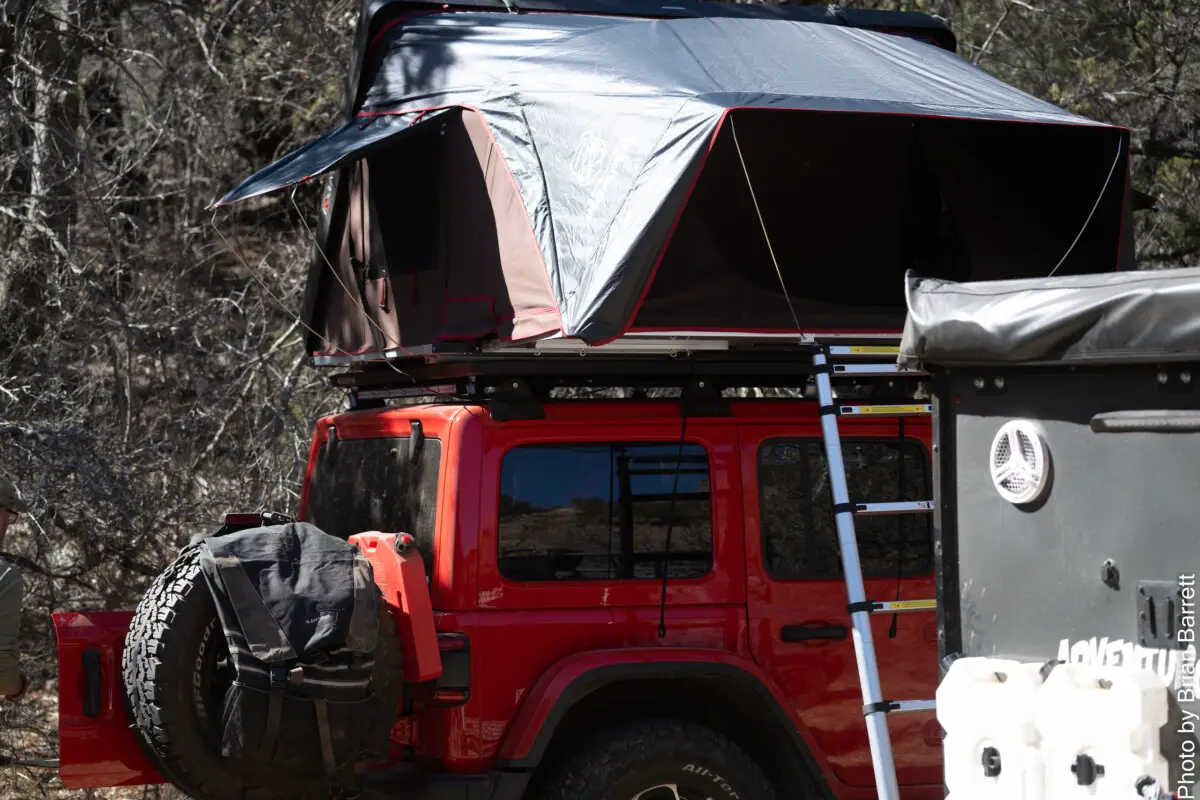You’ve probably heard about vanlife and seen cute pictures on social media and blogs, and maybe you even know about overlanding. Vanlife and overlanding are both adventurous and rugged, but they have their differences.
The main difference between vanlife and overlanding is intent. Vanlife is focused more on the idea that it is alternate housing. Overlanding is about chasing adventure. Vanlife can become overlanding if the focus becomes travel and adventure, but typically overlanding is more travel focused.
Which is for you? Should you load up your car and go or should you start van shopping? Read below to learn where you will thrive.
Overlanding
Unconventional ways of living have been steadily gaining popularity. Among these ways are vanlife, tiny homes, off-grid homesteading, and couchsurfing. Overlanding is more involved than most of these options and usually can’t be sustained for long amounts of time. But what is overlanding?
Overlanding is long-term, long-distance traveling. Overlanders live on the road in the elements, often stopping to camp overnight. Overlanding is like a long camping trip, but there isn’t a plan of where to go.
Usually, overlanders travel in a rugged off-road capable vehicle and bring camping supplies with them. They usually bring tents to sleep in. Sometimes people overland on bikes. They travel light and are in rugged conditions.
To prepare food, overlanders bring portable stoves or cook over a fire. While overlanding is a lot like camping, it is done for longer periods of time, so overlanders generally stop in nearby towns to restock food and essentials. While you are overlanding, you probably won’t have access to running water, so you will go long periods of time without toilets or showers.
Most overlanders bring supplies for other hobbies like hiking, mountain biking, or rock climbing. When they stop for the day, they set up camp and look for opportunities to do some of these hobbies. Some travel to specific areas with these hobbies in mind.
Intent
The most salient aspect of overlanding is intent and mindset. Overlanders share a love for adventure and travel. For overlanders, it isn’t about the destination. Instead, it’s about how you’re getting there and what’s along the way.
While the main goal of overlanding is the journey, some travelers embark on their journey hoping to find themselves or make something of themselves through the challenges living on the road presents. (Source)
How is van life different?
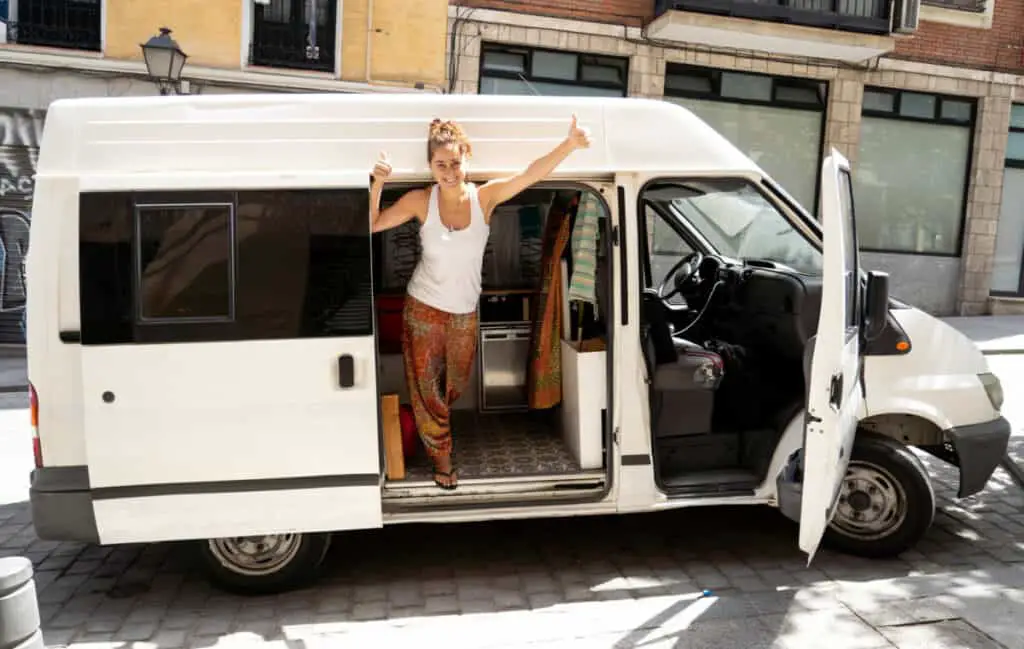
Vanlife has been gaining popularity, and many are considering ditching the conventional way of life for a more adventurous, economical approach. While overlanding is focused on traveling and adventure, vanlife is more of an economical approach to living. Vanlife can become overlanding if carried out in a specific way, but it isn’t typically considered overlanding.
What is it?
To start the vanlife, technically all you need to do is start sleeping in your vehicle. You don’t even need a van to start the vanlife. It’s an alternate way of living meant to provide more financial freedom and flexibility. The main idea of vanlife is living out of a vehicle to avoid monthly rental costs or permanent housing.
There are different takes on how to live the vanlife, but the most common perception of vanlife is essentially a livingspace on wheels. Most vandwellers have upgraded their van to accommodate everyday life. Most have beds, kitchens, toilets and showers, and storage space.
Often vans are tricked out with ways to preserve food and cook food such as refrigerators and stoves. They also have a way to get power to all of their appliances and to individual devices. Sometimes vans have solar panels to charge power sources.
Intent
Vanlife is focused on making a comfortable living space with the potential to travel comfortably. The intent of vanlife differs from overlanding in that it is more about the lifestyle and affordable way of living, whereas overlanding is about the journey and the adventure. Vandwellers are usually considered rugged adventurers, but their living area is typically comfortable compared to an overlander’s.
While living in a van can be more about the financial ease and flexibility, it can also slide into the realm of overlanding. If your vanlife intent becomes about taking journeys and exploring, you are considered an overlander.
Finances
When overlanding, it’s difficult to keep a steady job and be financially self-reliant, but you can easily keep a job and live a normal life while living in a van. Vanlife is typically more stationary than overlanding. You can keep a physical job more easily while living in a van than while overlanding.
What it Takes to Start the Vanlife
All you really need to start the vanlife is to live in your car, but when people talk about vanlife or when you see pictures and blogs about it, it takes more preparation than you may think.
Most vandwellers have purchased a van and installed furniture and appliances to make it comfortable. Some are more equipped than others, but the ideal van has a bed or sleeping area, stove, fridge, food storage area, toilet, and a shower.
Living in a van comes with different regular chores like dumping your sewage, running to the laundromat, filling van with gas, and vehicle repairs. Living in a small space requires more efficient cooking processes and housekeeping habits. However, it also comes with the benefit of flexible living, cheaper or no rent at all, and traveling with your house.
What it Takes to Become an Overlander
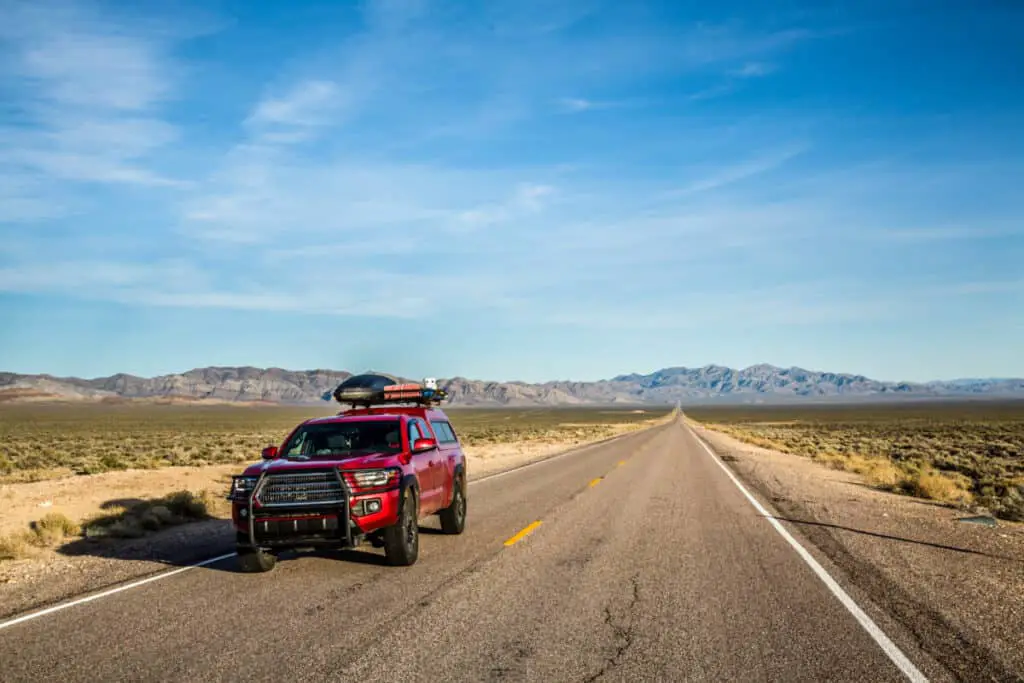
Intent
The most important thing you will need is wanderlust. An overlander has a desire to travel and see the outdoors that isn’t satiated by the occasional weekend camping trip. You will need to be focused on the journey.
Vehicle
While there isn’t one type of car that is perfect for the job, there are some standards that you should try to meet, like cargo space, off-road ability, durability, and gas mileage. First, you want to make sure your vehicle can handle the terrain you want to tackle.
Second, you want to be sure all the supplies you need will fit in your vehicle. Consider all other factors like if your budget can support its gas mileage, if the vehicle will hold up when exposed to elements for the entirety of your trip, and if it’s compatible with any gear you want to bring, such as a rooftop tent.
Vehicle gear
It’s crucial to be prepared when going out into the elements as proper preparation could save your life. If you are traveling to rural or isolated areas, you may not have someone nearby to get you out of trouble, so you will want to have reliable gear.
Have extra fuel storage and spare tires and tools to change a tire. You may be far away from town and have problems with tires or fuel, so these are must haves. Another must have is a jumpstart kit and ensure your car has a good battery.
If you have a rugged vehicle and you plan to push it to the limits, you’ll want vehicle recovery equipment such as traction boards, recovery straps, or a winch.
While upkeep can keep your vehicle in shape and prevent most of the major issues out there, there will be unexpected problems that arise, so keeping a financial reserve for potential vehicle repairs is important.
Gear
After you are set up with a vehicle that can handle rough terrain and sustain your travel needs for a long period of time, you will need to start thinking about ways to sustain your life needs. You will need: shelter, food, water, sanitation, health care, and protection from the elements.
While taking care of all of these needs, you will also need to keep in mind the accessible cargo space you have. You need to eat, sleep, and be prepared for a disaster, but your vehicle size limits how much you can bring with you.
Tents
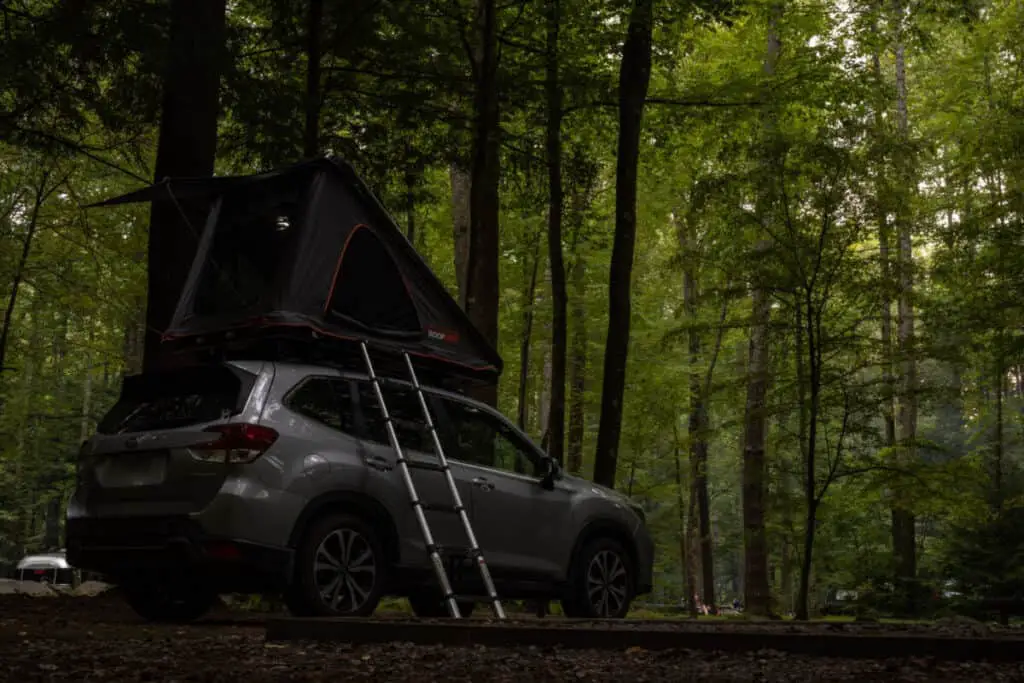
When looking for shelter, there are a few options that will vary on your travel vehicle. A common option for overlanders is a rooftop tent or popup tent that attaches to your vehicle. They come in different styles for different car models. There are some that mount to the top of an SUV or utility vehicle and some that fit in the bed of a truck.
These are great because they keep you off the ground and are easy to use after the initial setup. When choosing a popup tent, check for compatibility with your vehicle’s rooftop racks, the weight your vehicle can handle, and durability against the elements. The prices for popup tents vary, but generally a rooftop tent is more expensive than a ground tent.
A ground tent helps you avoid the higher cost and lessens the impact on your vehicle, but it does take more daily effort to setup and maintain. The most important thing to keep in mind is resilience to the elements. Find one that’s waterproof, that can hold up to long term use, and will withstand anything else you might encounter such as animals or string wind.
Food and Water
Water is one of the most important resources you will bring with you. You need to make sure you have a container that will hold enough water for your intended time out and enough store for emergencies. In addition to this, you should have some water purifying supplies. Most water filtration devices are inexpensive and give you the opportunity to use the natural resources around you.
There are many options available for cooking food while overlanding, but the most common way is to use a propane powered camp stove. They are relatively inexpensive and come in a variety of sizes.
Work and Financial Stability While Overlanding
While on the road, you will need the financial means to keep up your lifestyle. There are a few ways to fund your trip.
Savings
The most obvious answer is to save up for the long trip and just use your savings while you make your journey. This works for some, but it’s important that you determine costs before you leave and add in potential costs of returning. For example, if you sell your home or end your rental lease, you will need to procure housing once you complete your travels. Many overlanders will sell belongings and homes to embark on their journey, but this isn’t an option for everyone.
Sponsorship
Another way to make it financially is through a sponsorship. This takes some preparation. You will need to build up an impressive profile on social media, become familiar with gear brands, and start a blog or video channel. After you have built credibility, reach out to companies and brands to see if they will give you gear in exchange for reviews and mentions in your videos, blogs, or social media. You could also monetize your videos and blog posts to start earning money from them.
This method will require effort on the road. In the fast paced internet life, maintaining a constant presence online is important for ensuring income.
Seasonal Work
Pick up seasonal work where you travel. Each season brings its own jobs and if you do some of these jobs, you may be able to support your lifestyle. This option doesn’t allow you to be picky about what you do and it isn’t guaranteed, but if you leave with some cushion room and rely on a few jobs, you likely won’t struggle financially.
Work Remotely
With remote jobs becoming more and more available, you may be able to work for your current employer remotely. This may seem like the most ideal option at first, but it does have some downsides to consider. If you work remotely, you will need access to WIFI and power.
While power and WIFI can easily be accessed from a coffee shop, you may not want to spend everyday in town at a coffee shop. One characteristic of overlanding is the rugged “unknown” terrain. The unknown terrain isn’t usually full of coffee shops and WIFI. To get the real overlander experience, you will need to travel far and wide where it may not be convenient to work.
While working remotely has its downsides, it provides a way to support yourself on the road.
Where to Start
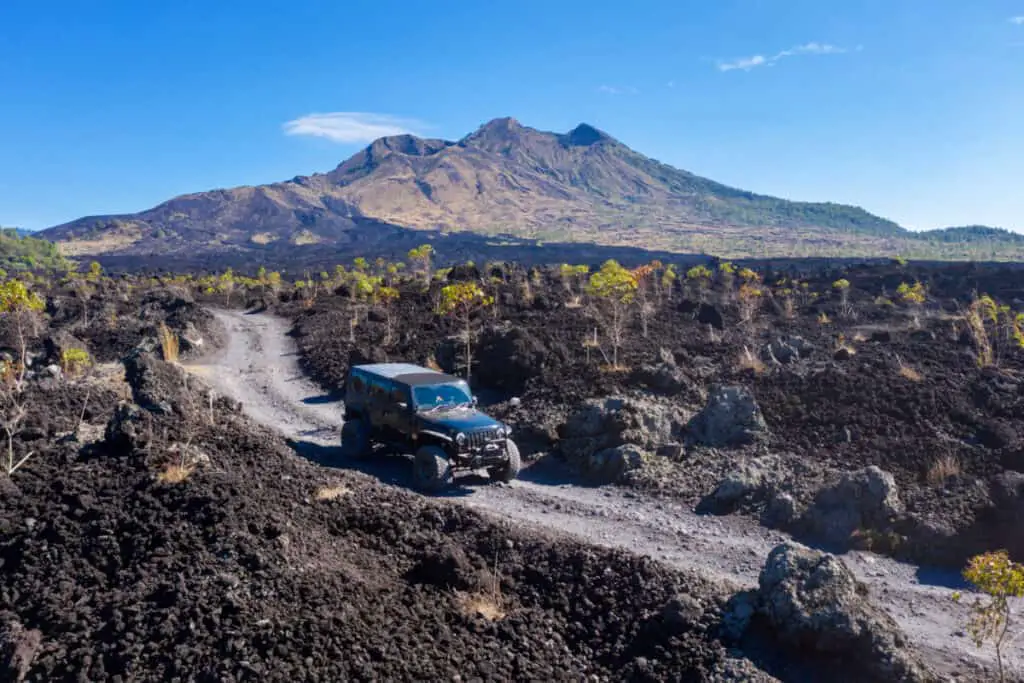
First, define your intent. Are you looking for a long-term, flexible living space that gives you a sense of adventure? Or are you looking for an immersive rugged journey?
Overlanding and vanlife both offer unique living situations, but they hare different. Perhaps you want to try out overloading for a short period of time and see if you enjoy it. It’s a good idea to get comfortable with your gear and habits before you head out for a long overlanding trip. Living in a van is a long-term commitment, and it can be expensive to furnish your van.

